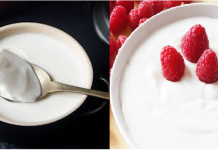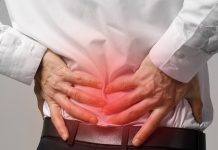 It’s the burning question for the mass- What can be done to burn fat! And, more often than not, nobody has any clear idea of what works better than what, when it comes to taking out the sturdy fat from the body. We read, listen, follow diet, workout about it and get even more bewildered! Then comes the end result, sheer frustration!
It’s the burning question for the mass- What can be done to burn fat! And, more often than not, nobody has any clear idea of what works better than what, when it comes to taking out the sturdy fat from the body. We read, listen, follow diet, workout about it and get even more bewildered! Then comes the end result, sheer frustration!
The duration and intensity of exercise determines which fuel is burnt, whether fat, carbs, or both. Basic fuel that provides energy is a chemical substance called ATP (adenosine triphosphate) which is constantly renewed as required from stored energy. The oxygen supplied when one breathes in during exercise is in itself not a fuel, but the supporter of combustion which allows fuel to be used, just like oxygen helps fire burn. Energy is stored in the body in the form of creatine phosphate, glycogen (storage form of carbohydrate) and triglycerides (fats).
Absolute strength/Speed or intense exercise
The effort in this kind of exercise is extreme and cannot be maintained for more than about 10 seconds, with peak achieved at 6 seconds. Examples include heavy weight lifting, sprinting, and jumping. During brief high intensity exercise, ATP stored in muscles and creatine phosphates (CP) are used up for energy. ATP can last for 2 to 3 contractions of a muscle, and must be rapidly and continuously produced in the body to fuel such high intensity exercise. Once ATP is used up, creatine phosphate is the chief fuel, and once CP is used up, high intensity workout is not possible. In this, neither fat nor carbohydrates are used as fuels.
You may also like: Follow this to Lose Belly Fat in 4 Weeks
Sustained exercise
The effort made in this kind of exercise can be sustained at the chosen level for a maximum of 60 seconds. During this short duration of intense exercise, muscles cannot absorb enough oxygen to provide energy and must obtain the energy through a process known as anaerobic process (which does not depend on oxygen to give energy). In anaerobic exercise, large amounts of a substance known as lactic acid is produced which cause a feeling of heaviness, muscular pain, and headache. Examples are a 400 meter race, gymnastics, boxing etc. In this form, glycogen is used as fuel, which provides the required ATP and CP. This kind of exercise is supported for 2 to 3 minutes. Glycogen stores are found in liver and muscles and it is burnt up in the absence of oxygen. During very intense effort of 15 to 20 minutes duration, about 150 to 200 grams of glycogen is burnt. Muscles contain about 300 grams of glycogen and can sustain up to 30 minutes of sustained exercise. Carbohydrate is the fuel used in this kind of exercise.
Endurance exercise
This is an exercise of low intensity which is sustained for a longer time. Depending on the effort, it can last for several minutes to several days (as in mountain climbing). The muscles have enough oxygen to provide energy. Jogging, cycling, rowing, marathon are all endurance exercises. These last for more than 3 minutes, and will require oxygen to provide energy. As duration of exercise increases, the body favors using fats as the energy source. Any effort that lasts more than 30 minutes, glycogen stores become depleted, and lipids are burnt. While glycogen provides 950 to 1900 kcal, about 15 kg of adipose tissue or 11 kg of fat can liberate up to 100,000 kcal! Fats and carbohydrates are both used in this long duration exercise, but fats are the preferred fuels.
You may also like: What’s So Bad About Trans Fats?
 In short, longer duration exercise burn more fat, and exercises that involve more intensity burn up more carbohydrates. Eating a carb-rich diet results in more glycogen stores in muscles. But, eating too much carbs can also result in weight gain since carbs also hold water. Each gram of glycogen holds about 3 grams of water. The extra weight can sometimes impact performance in competitive sports. Also, too much carbs also lead to heaviness and stiffness, making one prone to injuries.
In short, longer duration exercise burn more fat, and exercises that involve more intensity burn up more carbohydrates. Eating a carb-rich diet results in more glycogen stores in muscles. But, eating too much carbs can also result in weight gain since carbs also hold water. Each gram of glycogen holds about 3 grams of water. The extra weight can sometimes impact performance in competitive sports. Also, too much carbs also lead to heaviness and stiffness, making one prone to injuries.
A balanced diet with 15 to 20% proteins, 100 to 150 grams of carbohydrates a day and 15 to 25 grams of healthy fats a day is a must. Expert fitness trainers and nutritionists can plan a suitable diet and exercise plan based on individual body type and fitness levels. Exercise frequency, duration, intensity and progression need to be planned and modified from time to time based on results and adaptations, which can be best done in top fitness centers in your city! Share this with your friends if you liked our article and we will come back with more interesting stuff soon! Till then, stay fit, stay happy!


 Traqade
Traqade































Hey, recently I wanted to try something new to break up the daily routine and came across an online casino that immediately caught my attention. After a few losses in other games, I decided to take a bigger risk and tried https://unlimluck.com.gr . The games were fast-paced and exciting, and every win gave a strong sense of satisfaction. In Greece, players can take advantage of special bonuses that make the experience even more enjoyable. Now I consider it the perfect place to relax, and I’ll definitely be coming back soon for more games.